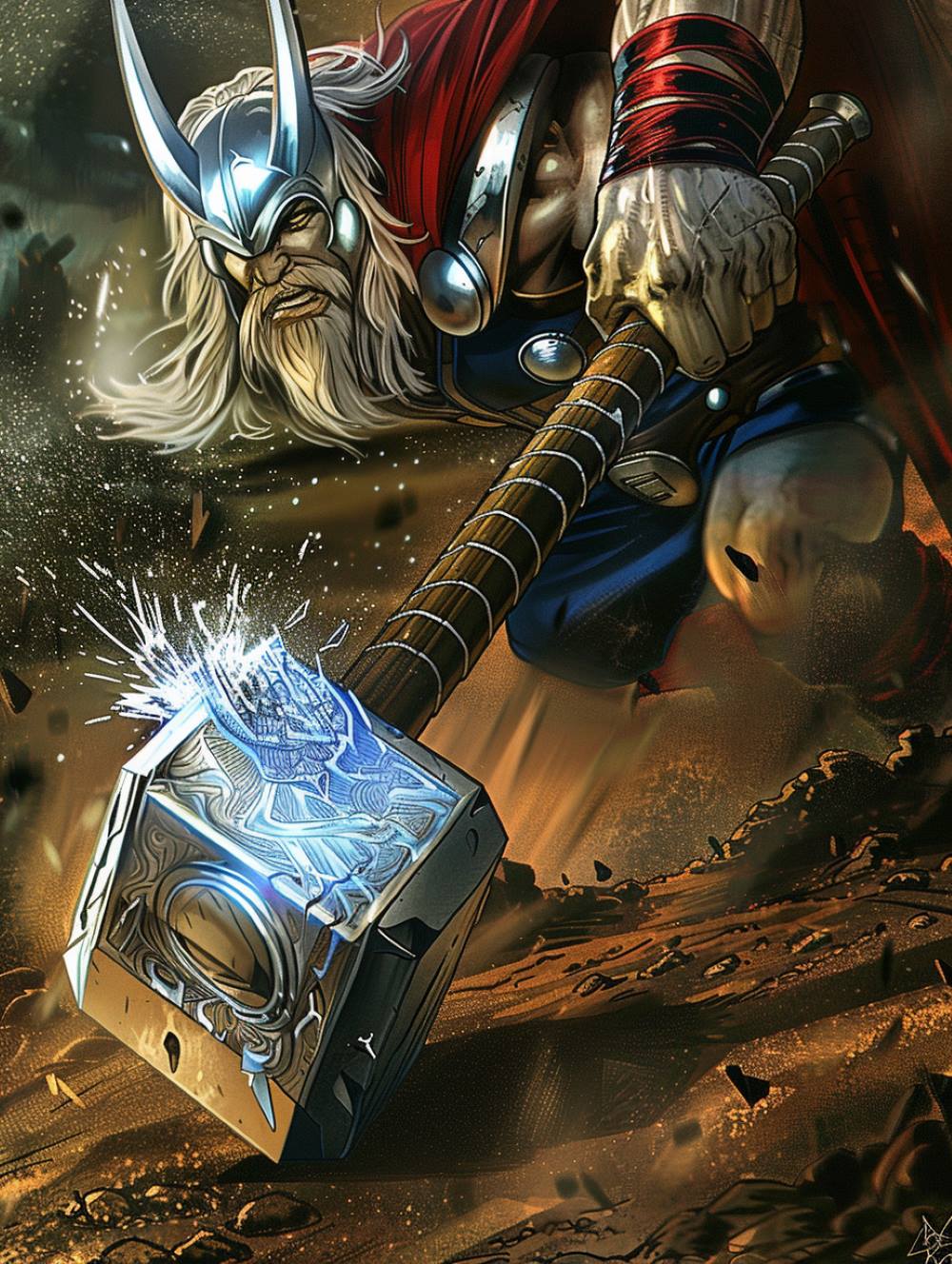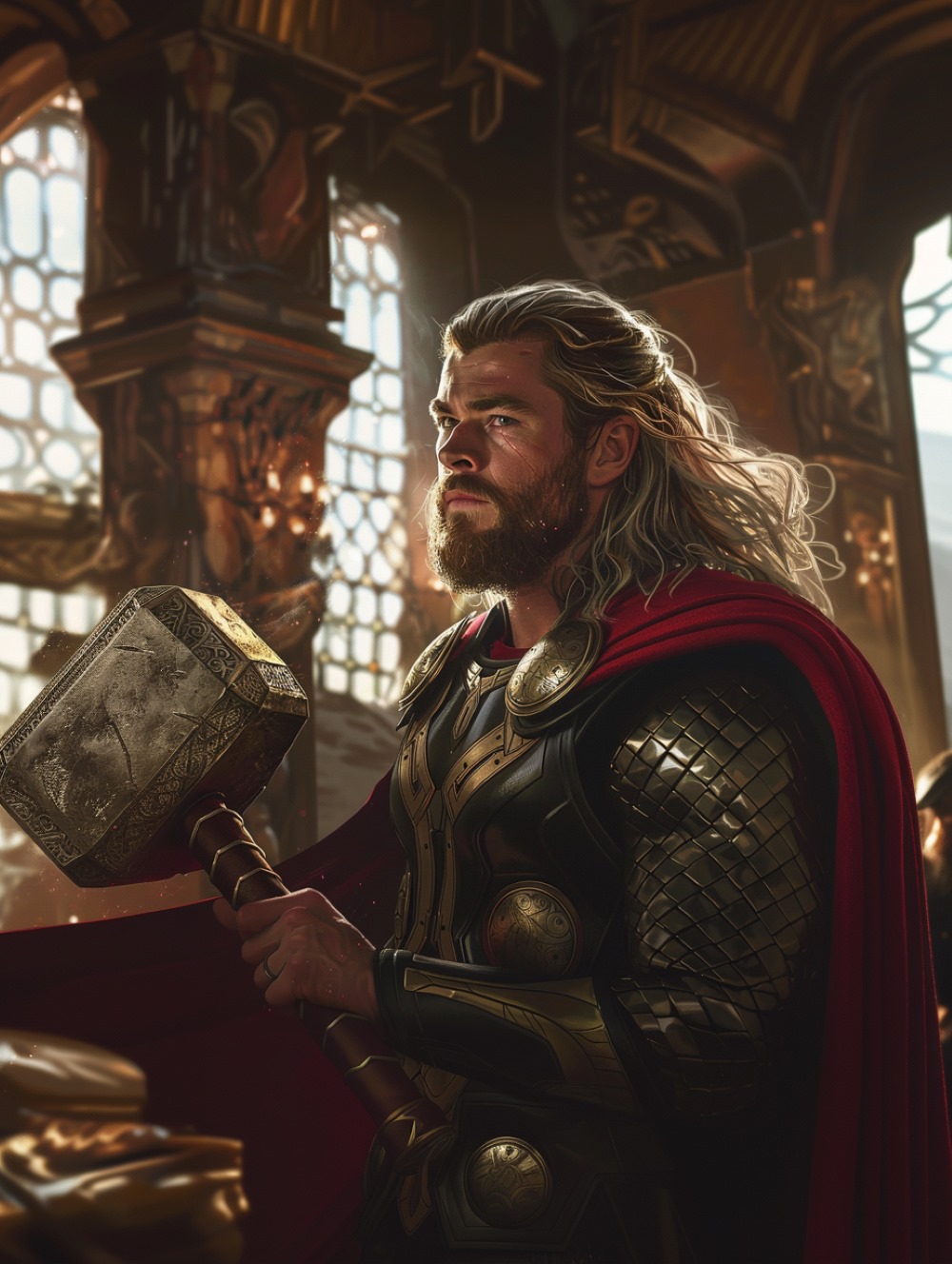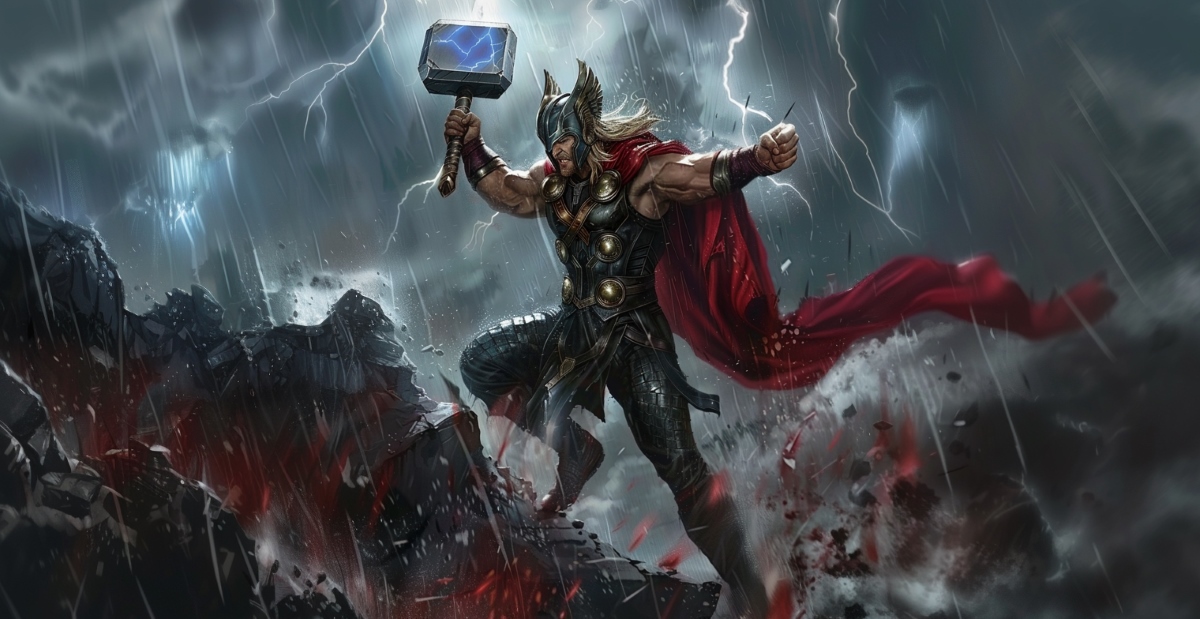In the Thor 2020 comic issues #23 and #24, Thor, the God of Thunder, has faced numerous formidable foes and challenges.
Yet, none was as heart-wrenching as the moment he had to destroy his beloved hammer, Mjölnir.
This wasn’t just about losing a weapon; it was about severing a part of his soul. Mjölnir had been Thor’s companion in countless battles, a symbol of his strength, courage, and worthiness.
The decision to shatter it into a million pieces came from a desperate bid to save Asgard and the universe from a threat within.
Contents
The Corruption of Mjölnir
As the story unfolds, Mjölnir is corrupted by an ancient, malevolent force, fused with the wrathful essence of Mangog.
This fusion transformed Mjölnir from a loyal ally into a formidable adversary, bent on destruction.
Thor’s battle against his once-trusted hammer was not just a physical confrontation but a fight against what Mjölnir had become—a symbol of betrayal.
The emotional turmoil of this conflict was profound, as Thor grappled with the realization that he must confront and destroy a part of his identity to protect those he loved.
Odin’s Sacrifice and the Destruction of Mjölnir
Although Thor fought hard, his own power was not enough to battle against the corrupted Mjölnir.
Mjölnir was previously the main source of Thor’s power. Now, it has turned against him, greatly diminishing Thor’s abilities.
Realizing that the corrupted Mjölnir can destroy Asgard and other realms, in a selfless act of sacrifice, Odin transferred his Odin-Force to Thor, equipping him with the power needed to face the corrupted Mjölnir.
This act was more than just a strategic move; it was a father’s final blessing to his son, imbued with hope, strength, and the courage to do what must be done.
With the Odin-Force, Thor was able to force the corrupted Mjölnir to teleport to the place where it was created.
Here, Thor smashes Mjölnir into a million pieces, a moment that is both triumphant and tragic.


It symbolizes the end of a chapter, the release from corruption, and the painful yet necessary action of destroying a part of oneself for the greater good.
Aftermath and New Beginnings
The aftermath of this cataclysmic event brought a mix of sorrow and relief. It begins the dawn of Thor’s new era.
Initially, Thor was unconscious for months after breaking the corrupted Mjölnir.
When he woke up, Angela, Thor’s ally, presented him with a reforged Mjölnir, symbolizing not an end but a beginning.

This new Mjölnir, however, was different. It came with a new power—the voice of Odin, now residing within the hammer.
Because Valhalla was destroyed during the battle created by the corrupted Mjölnir, Odin cannot reincarnate, so he chose to stay inside Mjölnir.
This development introduced a complex dynamic between Thor and the legacy of his father.
The hammer that once symbolized Thor’s strength and worthiness now also carried the soul of Odin, offering unsolicited advice and reminders of a complicated paternal relationship.
Thor’s feelings towards this new incarnation of Mjölnir were ambivalent.
While it represented a powerful link to his father and a source of unmatched power, it also meant he couldn’t simply move on from Odin’s death.
The presence of Odin’s soul within Mjölnir, critiquing Thor’s decisions, was a constant reminder of the burdens of legacy and the inescapable ties of family.
As Thor prepares to face the future, with the task of mending the gates of Valhalla, he must navigate this new relationship with his father, now housed within Mjölnir.
